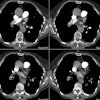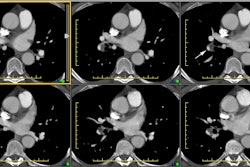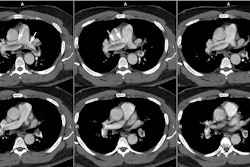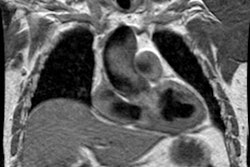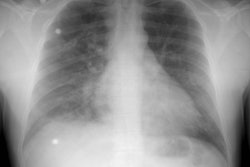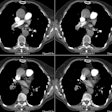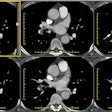Radiology 1996 Oct;201(1):37-41. Evaluation of thoracic aortic disease with the use of helical CT and multiplanar reconstructions: comparison with surgical findings.
Quint LE, Francis IR, Williams DM, Bass JC, Shea MJ, Frayer DL, Monaghan HM, Deeb GM
PURPOSE: To assess the accuracy of helical computed tomography (CT) in differentiating different types of thoracic aortic disease, to determine the incremental value of multiplanar reconstructions, and to determine if helical CT could help to reliably predict the need for intraoperative hypothermic circulatory arrest. MATERIALS AND METHODS: Forty-nine patients underwent pre-operative helical CT with multiplanar reconstructions. Images were reviewed for type and location of pathologic lesions and for features that indicated the need for hypothermic circulatory arrest. The incremental yield of multiplanar reconstructions compared with that of axial images was assessed. Imaging findings were compared with surgical findings. RESULTS: The types of lesions present in the patients included 36 aneurysms (three were ruptured), six penetrating ulcers, five dissections, and two pseudoaneurysms. The accuracy of diagnosis was 92% (45 of 49 patients) with the use of CT (both with and without multiplanar reconstruction). The necessity of hypothermic circulatory arrest was successfully predicted in 94% (45 of 48 patients) of cases. CONCLUSION: Helical CT, both with and without the use of multiplanar reconstruction, enabled highly accurate differentiation among diseases of the thoracic aorta and prediction of the need for hypothermic circulatory arrest.
PMID: 8816517, MUID: 96413356
